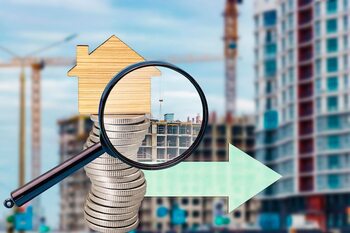The importance of community heritage in real estate appreciation

The importance of community heritage in real estate appreciation is a crucial aspect that we cannot overlook. In a world where investment in real estate becomes a priority, understanding how the cultural and social legacy of a community influences its value is essential. Community heritage not only adds beauty and character to our environments but also enhances real estate appreciation, creating a virtuous cycle that benefits all residents. Let us discover together how these elements intertwine to elevate our home and our community.
1. Definition of community heritage: beyond the material.
Community heritage is defined as the set of values, traditions, customs, and cultural elements that a community shares and preserves over time. It goes beyond material aspects, such as historic buildings or monuments; it also encompasses the collective identity of its inhabitants, social relationships, and shared memory. This intangible legacy is fundamental for strengthening the sense of belonging and cohesion within a community, as it allows its members to connect with their history and build a future in harmony with their roots. Thus, community heritage becomes an invaluable resource that can directly influence the perception and valuation of a specific area.
In real estate terms, community heritage plays a crucial role in the appreciation of properties. When a community is characterized by its rich cultural and social heritage, this tends to attract both residents and investors interested in settling in vibrant and characterful environments. The presence of local festivals, deep-rooted traditions, or well-preserved public spaces contributes to creating an appealing atmosphere that not only enhances quality of life but also increases land value. In this way, the intangible elements of community heritage become determining factors for the sustainable development of neighborhoods and their ability to generate economic and social wealth.
2. How cultural heritage impacts property values
The cultural heritage of a community has a significant impact on property values, as it is not only about the physical aspect but also about the history and traditions that accompany it. Areas that preserve their cultural legacy tend to attract buyers interested in living in environments rich in history and authenticity. This emotional connection to the past can enhance the appeal of properties, thereby increasing their demand and, consequently, their value in the real estate market. Historic architecture, well-maintained public spaces, and cultural festivities are factors that make a community desirable to future homeowners and investors.
Furthermore, cultural heritage contributes to creating a sense of identity and belonging among residents, which is essential for the social and economic development of any locality. When the community actively engages in the conservation and promotion of its heritage, it not only enhances the quality of the urban environment but also generates a conducive atmosphere for local businesses and tourism initiatives. This dynamism not only strengthens the social fabric but also creates economic opportunities that can translate into a sustained increase in real estate value. Therefore, taking care of community heritage becomes a strategic investment for all those interested in maximizing the appreciation of their properties.
3. Examples of Costa Rican communities with strong heritage
Costa Rica is home to diverse communities that stand out for their rich cultural and natural heritage, significantly influencing real estate appreciation. A clear example is the town of Sarchí, famous for its tradition in the craftsmanship of hand-painted carts. This artistic legacy not only attracts tourists from around the world but also makes Sarchí a desirable place to live, thereby increasing the value of local properties. The preservation of these artisanal traditions reinforces community identity and fosters a sense of belonging among residents, which in turn positively impacts the local economy.
Another notable example is the community of Turrialba, known for its rich agricultural heritage and stunning landscapes. The production of coffee and other traditional crops not only keeps Costa Rican culture alive but also attracts investments in rural and sustainable tourism. This approach to sustainable development allows both residents and investors to recognize the value of the natural environment as a valuable asset. Consequently, properties in Turrialba have seen significant increases in their value due to this connection between community heritage and environmental sustainability.
4. The relationship between local identity and real estate valuation
The relationship between local identity and real estate valuation is a fundamental aspect that manifests in various ways in our communities. When a neighborhood manages to preserve its cultural heritage, a sense of belonging and pride is generated among its residents. This emotional bond not only nurtures social well-being but also attracts new residents and visitors interested in experiencing that authenticity. As properties within these historically or culturally rich areas are valued for their uniqueness, an increase in demand is observed, which naturally raises the prices of the local real estate market.
Additionally, the recognition of local identity can be a driver for sustainable development. Communities that promote their cultural heritage often invest in the revitalization of public spaces and the conservation of landmark buildings, which not only enhances the aesthetics of the area but also fosters a more dynamic economy by attracting local businesses and tourism. These aspects contribute to creating an appealing environment that further increases the value of surrounding properties. Thus, we can see how real estate appreciation is not just an economic issue; it is intrinsically linked to the history and culture that each community brings to its urban landscape.
5. Strategies to preserve heritage while fostering development
To preserve heritage while promoting development, it is essential to implement strategies that integrate the history and culture of a community into new real estate projects. One of the first actions that can be taken is the creation of regulations that protect historic buildings and cultural spaces, ensuring that any new construction respects the local architecture and maintains the identity of the place. In this way, not only is the cultural legacy safeguarded, but the area's appeal to potential buyers and investors is also increased, as they value the unique characteristics of a neighborhood with history.
Another effective strategy is to involve the community in the development process. Encouraging dialogues between developers, residents, and local authorities allows for the identification of specific needs and the preservation of those elements of heritage that truly matter to the inhabitants. Additionally, initiatives such as workshops and forums can help educate about the importance of community heritage in real estate value. This collaborative approach not only reinforces the sense of belonging among residents but also promotes a more sustainable and conscious development that respects both the past and the future projections of the community.
6. The influence of tourism on the added value linked to community heritage.
Tourism has emerged as a powerful engine driving the value of properties linked to community heritage. By attracting visitors interested in local history, culture, and traditions, communities see an increase in the demand for real estate. This phenomenon not only translates into a rise in property values but also generates opportunities for local economic development. The revitalization of heritage spaces can transform entire neighborhoods, turning them into attractive destinations that enhance the real estate offering and benefit residents by improving their quality of life and available commercial options.
However, it is essential to manage tourism sustainably to preserve the authentic character of community heritage. A balanced approach allows economic benefits to not compromise cultural identity or the well-being of permanent residents. By promoting initiatives that involve the community in tourism development, it ensures that the cultural legacy remains a valuable and appreciated asset for both visitors and local inhabitants. In this way, the added value linked to community heritage becomes not only an economic issue but also an opportunity to strengthen social cohesion and promote a sense of belonging among community members.
7. Future of community heritage: challenges and opportunities in the real estate market
The future of community heritage presents itself as a landscape full of challenges and opportunities in the real estate market. As cities grow and diversify, the pressure to develop land to meet housing demand can jeopardize essential cultural elements. On one hand, accelerated urbanization can lead to the loss of historic buildings, local traditions, and community spaces that are fundamental to collective identity. However, this same situation also opens the door to new initiatives aimed at preserving and revitalizing community heritage, turning it into a distinctive attraction for potential buyers and tenants. In this context, developers have a unique opportunity to integrate sustainable practices that respect and strengthen cultural legacy while generating economic value. Moreover, changes in the perception of urban space offer an unprecedented opportunity to redefine community heritage as a valuable asset in the real estate sector. Modern consumers increasingly value communities with character and history, meaning that developments that successfully blend the old with the new can stand out in a competitive market. Initiatives such as urban rehabilitation projects or the creation of cultural districts can not only preserve local identity but also boost the regional economy through tourism and commerce. Thus, fostering a connection between community heritage and urban development strategies becomes not only a social responsibility but also a smart strategy to maximize long-term real estate appreciation.



